Kai Khosrow
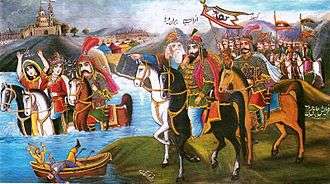
Kai Khosrow or Kay Khosrow (Persian: کیخسرو) is a legendary king of the Kayanian dynasty and a character in the Persian epic book, Shahnameh. He was the son of the Iranian prince Siavash who married princess Farangis of Turan while in exile. Before Kai Khosrow was born, his father was murdered in Turan by his maternal grandfather Afrasiab. Kai Khosrow was trained as a child in the desert by Piran, the wise vizier of Afrasiab. His paternal grandfather was Kay Kāvus, the legendary Shah of Greater Iran who chose him as his heir when he returned to Iran with his mother. The name Kai Khosrow derives from Avestan Kavi Husravah, meaning "famous".
Cup of Kai Khosrow
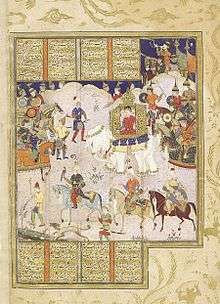
The Cup of Jamshid or, in reality, the Cup of Kai Khosrow (Cup of Djemscheed or Jaam-e Jam, or cup of Kai Khosrow in Persian: جام جم) is a cup of divination which, in Persian mythology, was long possessed by the rulers of ancient Persia. The cup has also been called Jam-e Jahan nama, Jam-e Jahan Ara, Jam-e Giti nama, and Jam-e Kei-khosrow. The latter refers to Kaei Husravah in the Avesta, and Sushravas in the Vedas. This Cup was used just once and by Kai Khosrow in his reign to find were Bizhan was, who had gone to the Turan border as an ambassador. Bizhan had become romantically involved with Manizheh, the daughter of Turanian king Afrasiab. Manizhe clandestinely brought him to her bedroom, and when Afrasiab found out he threw Bizhan into a pit and expelled Manizheh from the castle. Everyone in Iran thought that Bizhan was dead except for Kai Khosrow who saw him alive in the Cup. Kai Khosrow then sent Rostam to rescue Bijan.
The cup ("Jām") was said to be filled with an elixir of immortality and was used in scrying. As mentioned by Ali-Akbar Dehkhoda, it was believed that one could observe all the seven heavens of the universe by looking into it (از هفت فلک در او مشاهده و معاینه کردی). It was believed to have been discovered in Persepolis in ancient times. The whole world was said to be reflected in it, and divinations within the Cup were said to reveal deep truths. Sometimes, especially in popular depictions such as The Heroic Legend of Arslan, the cup is visualized as a crystal ball. Helen Zimmern's English translation of the Shahnameh uses the term "crystal globe".[2]
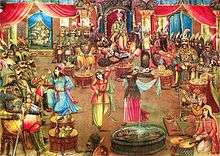
See also
References
- ↑ ""Bayasanghori Shâhnâmeh" (Prince Bayasanghor's Book of the Kings)". Archived from the original on August 5, 2009. Retrieved April 23, 2009.
- ↑ Shahnameh (The Epic of Kings): Bijan and Manijeh
External links
- Sixty years Khosrow Kingdom in the Shanahmeh (in Persian)
| Preceded by Kay Kāvus |
Legendary Kings of the Shāhnāma 2691–2751 (after Keyumars) |
Succeeded by Kai Lohrasp |
| Preceded by Kay Kāvus |
Legendary Kings of the Shāhnāma 60 years |
Succeeded by Kai Lohrasp |
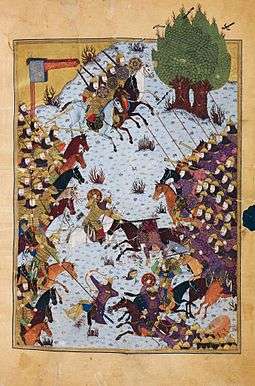
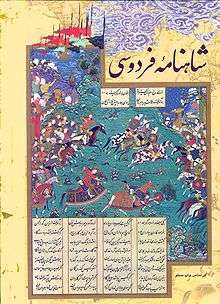
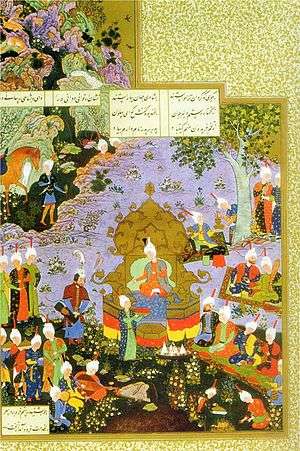
.png)
